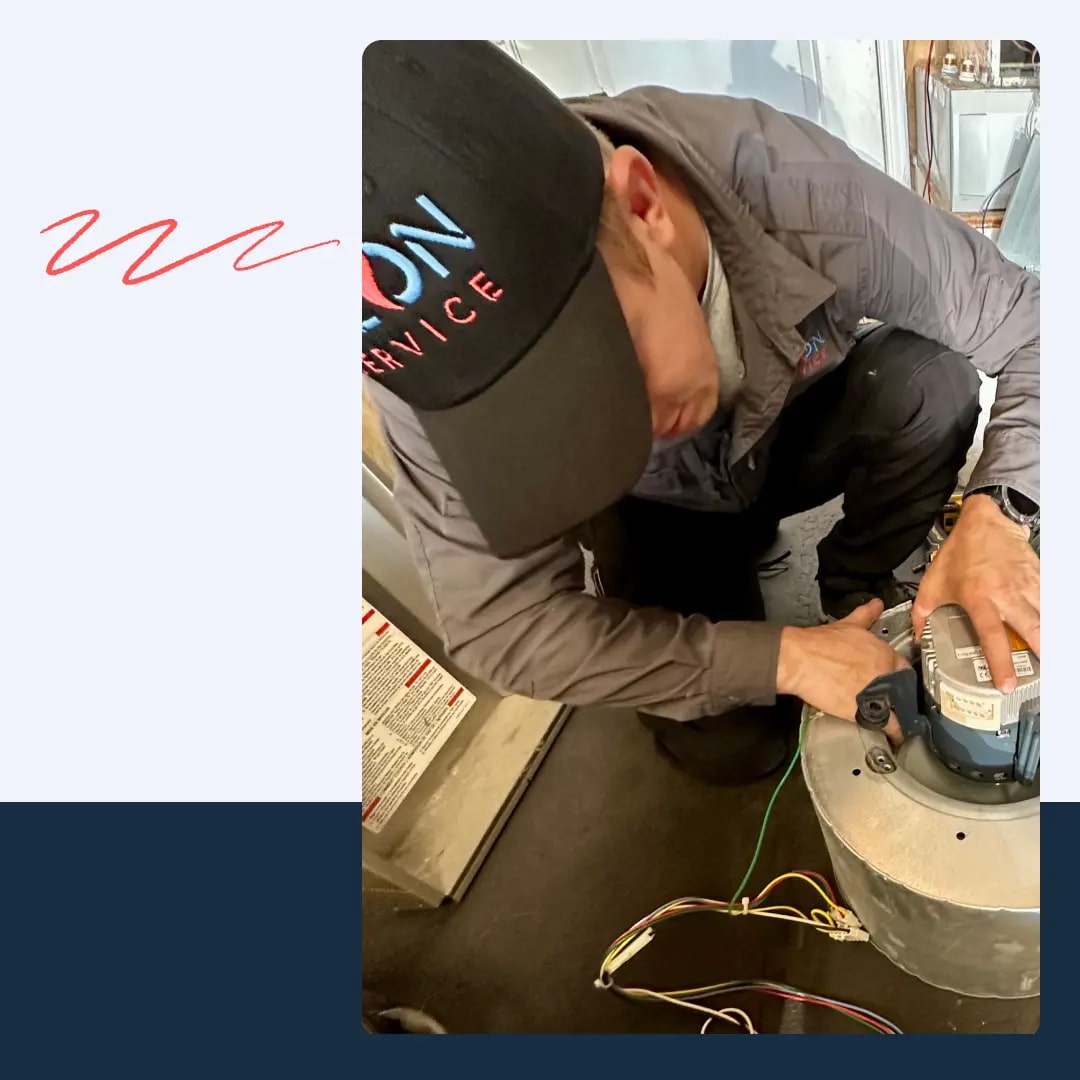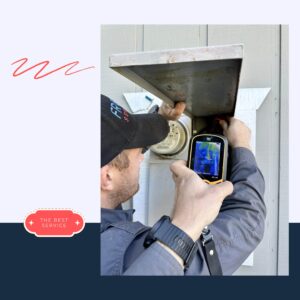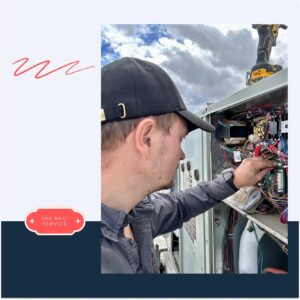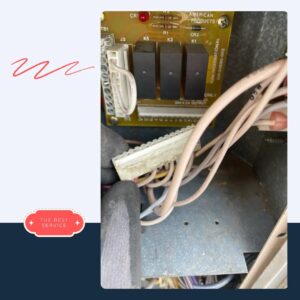Everything You Wanted to Know About Electrical Panel Change Cost
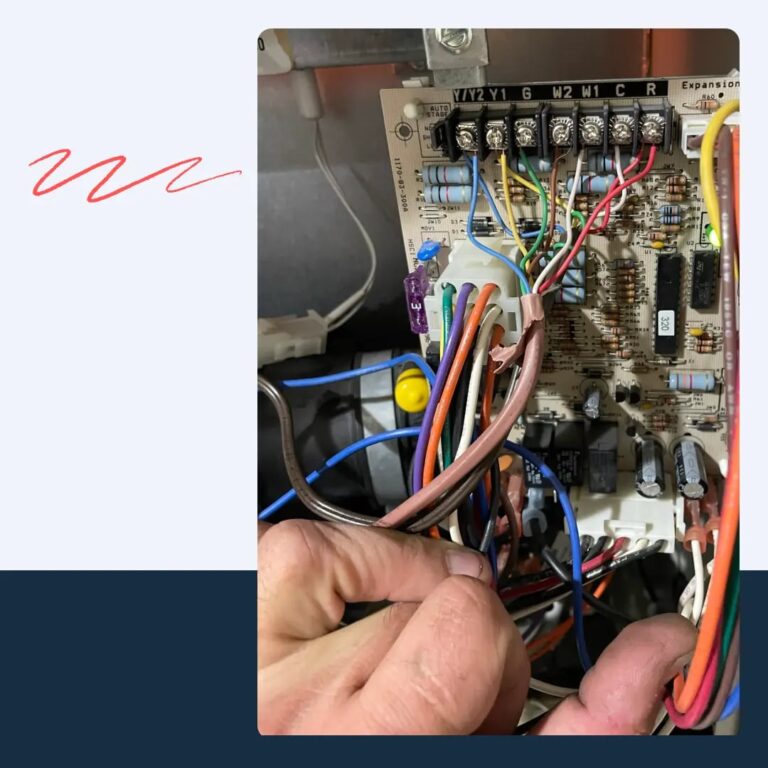
Is it true that every third home in the U.S. needs a new energy hub? Is it possible to install one for less than $1,000? What do electricians and bomb disposal experts have in common? These and many other questions we’ll explore in this article together with Freon Service.
How Much Does It Cost to Replace an Electrical Panel and How Relevant Is This Question?
According to various studies over the past few years, more than 38% of residential homes in the U.S. were built before 1970. This means they’re now over 50 years old, and many still have:
- 60–100-amp panels,
- fuses instead of circuit breakers,
- aluminum wiring,
- no GFCI/AFCI protection, and so on.
But that’s across the country—what about us?
- 200 A panels are the most common in residential homes in our state, accounting for 39–47%.
- 100 A panels make up 32–33% of the housing stock.
- Smaller-rated panels are less common.
Conclusion: 20–30% of homeowners in San Jose are thinking about electrical box replacement cost.
Why can’t you just keep living with the panel that’s faithfully served for decades?
Per NEC requirements and recommendations from manufacturers (e.g., Siemens, Square D, Eaton), an electrical panel should be upgraded every 20–30 years, especially if:
- it’s overloaded,
- there are no spare slots,
- the enclosure is rusted or not sealed,
- new systems have been added to the home: EV charging, HVAC, solar panels, etc.
Life doesn’t stand still. Technology evolves, and we eagerly enjoy its benefits. Powerful computers, spacious freezers, air-cooling systems saving us from sweltering heat—all these are unwitting culprits in why a home’s electrical system needs a serious upgrade from time to time.
Starting the Calculation: Cost to Replace an Electrical Panel
Let’s skip the moment when you call Freon Service and schedule an electrician’s visit. What’s the first step of the actual work?
Our specialist assesses the home’s load. This means analyzing electricity consumption to determine:
- What panel capacity is needed (100, 150, 200 amps, etc.)
- Which lines and breakers will be connected
- Whether there’ll be an overload after installing new equipment (e.g., air conditioner, electric stove, EV charger, etc.).
Here’s how it’s done in practice:
- To understand how much does it cost to upgrade electrical panel, the technician examines all devices in the home: electric stove, water heater, air conditioner, heating, washer, dryer, EV charger, etc.
- Evaluates each device’s power: in watts or kilowatts (e.g., electric stove – 8,000 W, EV charger – 9,000 W, etc.).
- Checks how many breakers are already installed and the gauge of the wires.
- Performs a load calculation per the National Electrical Code standard or a simplified method.
- Announces the decision. For example, a panel of at least 150 A is needed, preferably 200 A for safety, to avoid overloads and comply with regulations.
What Is the Cost of Replacing an Electrical Panel in Residential Spaces?
Of course, it matters what kind of home you have, its size, load, and infrastructure complexity:
- Single-family homes, like those in Willow Glen, are the most common cases our electricians handle. A 150–200-amp panel is usually sufficient. Cost: $1,800–$4,500. Sometimes, we don’t do a full replacement but add a dedicated line for a powerful HVAC system. This costs $300–$1,200. After these upgrades, your home won’t lose power when you run the air conditioner, toaster, and hairdryer at the same time.
- Condominiums/townhouses are smaller properties. A 100–150-amp panel is often enough. Shared infrastructure in multi-story buildings complicates access, increasing labor costs. What is the cost to upgrade electrical panel here? $1,200–$2,800.
- New apartments in multi-story buildings are the least demanding to maintain: $800–$2,000 for our service. Similar housing from the 1950s–1970s, like in East San Jose, will cost $1,500–$3,500. The main issue here is outdated aluminum conductors, long rusted due to humidity.
- Luxury properties in Almaden or Los Gatos consume more due to high loads from EV chargers and powerful HVAC motors. Their energetic brain needs to handle 200–400 amps. Installation: $3,500–$6,500.
As you can see, different San Jose neighborhoods and housing types affect the final cost.
Time and Coffee: How Much to Replace Breaker Box in a House?
Have you ever wondered what replacing a control panel looks like through a neighbor’s eyes?
- First, a dull thud, as if someone’s moving an old wardrobe,
- then—silence and the rustle of wires.
- And then—a pause. Coffee break.
The neighbor thinks enviously, “Nice job. Make some noise, drink some coffee.”
But behind this seemingly relaxed rhythm is a ticking time bomb of wires. One wrong cable, and the whole house will be lit by candles. Electricians, in fact, are like bomb disposal experts: they think a lot, dig carefully, then—click!—and it’s done.
That’s how it goes in residential spaces and commercial ones. Only the scale differs.
How Much Does It Cost for a New Electrical Panel for Businesses?
Such projects are pricier due to complex infrastructure and high reliability requirements:
- Mid-size office in Downtown, 3,500 ft2 and up – $21,000–$31,500.
Most often, it’s a 3-phase panel for 200–600 amps for lighting, security systems, and HVAC fans.
- Restaurant with a kitchen, around 2,000 ft2 – $20,000–$30,000.
Reason: heavy equipment like ovens, refrigerators, ventilation grills, and blowers. And, of course, the cooling system for chefs, waiters, and guests.
- Medical office, 5,000 ft2 and up, requires costs from $35,000 to $60,000.
Features: emergency circuits, data wiring, low tolerance for outages. All this demands a reliable and safe infrastructure.
- Shopping centers, 5,000–20,000 sq. ft., with shared panels for stores, lighting, elevators, and HVAC grilles.
These require 400–1,200-amp panels with three-phase power. How much for new breaker box? From $8,000 to $20,000, including design and connecting conductors to subpanels for individual tenants.
- Manufacturing facilities, 50,000+ sq. ft.
Huge loads from equipment, cranes, HVAC motors, and ventilation systems require main distribution panels of 800–2,000 amps. Cost: $15,000–$50,000.
These are rough estimates. To get an accurate quote, contact us. We’ll consider all your business’s energy needs and provide an answer.
Intellectual Cost to Replace Breaker Box
Beyond the cost of the panel itself, its installation requires significant skill and mental effort. Metaphorically speaking, installing an electrical panel is like assembling a complex puzzle. Amused by that comparison? Let us explain what we mean. An electrician doesn’t just “screw in breakers.” They:
- assess the load and distribute it across lines—gathering puzzle pieces by color;
- label and group wires—sorting puzzle parts;
- connect busbars, neutral, ground, and breakers into a safe and logical system—joining fragments of the picture.
All this in a confined space with a bunch of wires that look similar and fit similar slots. And if even one “piece” doesn’t fit, the breaker will trip, there’s a risk of wire melting, or a fire could start. That’s why it’s so important to maintain order and compactness while ensuring complete safety. Freon Service is ready to offer you a complex, high-precision engineering solution. Put us to the test.
